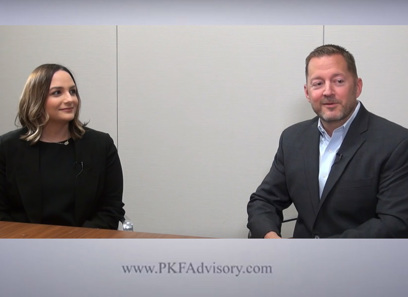Future-Proof Your Organization: Trick Cybersecurity Forecasts You Required to Know
As businesses confront the accelerating pace of digital transformation, understanding the evolving landscape of cybersecurity is essential for long-term resilience. Predictions suggest a significant uptick in AI-driven cyber threats, along with enhanced regulative scrutiny and the crucial change towards Zero Trust Architecture. To properly browse these difficulties, organizations must reassess their security approaches and foster a culture of recognition amongst workers. The effects of these modifications extend past simple conformity; they might redefine the very structure of your operational security. What actions should companies require to not only adjust however thrive in this brand-new setting?
Rise of AI-Driven Cyber Risks

Among the most worrying growths is using AI in creating deepfakes and phishing schemes that are incredibly convincing. Cybercriminals can produce sound and video clip web content, posing execs or trusted individuals, to control sufferers right into disclosing delicate details or accrediting illegal purchases. Additionally, AI-driven malware can adjust in real-time to evade detection by traditional safety and security actions.
Organizations have to identify the immediate demand to strengthen their cybersecurity structures to fight these progressing dangers. This consists of investing in sophisticated risk detection systems, fostering a society of cybersecurity recognition, and applying durable event reaction plans. As the landscape of cyber hazards changes, positive steps become essential for safeguarding delicate information and preserving company integrity in a significantly electronic world.
Increased Concentrate On Information Privacy
Exactly how can organizations successfully navigate the growing focus on data personal privacy in today's digital landscape? As governing frameworks progress and customer expectations increase, businesses need to focus on robust data personal privacy methods.
Investing in staff member training is crucial, as staff awareness directly affects data security. Furthermore, leveraging technology to enhance data security is important.
Collaboration with legal and IT teams is vital to align information personal privacy campaigns with company goals. Organizations ought to also engage with stakeholders, consisting of consumers, to connect their commitment to data privacy transparently. By proactively addressing information personal privacy worries, services can develop depend on and boost their credibility, ultimately adding to lasting success in a significantly scrutinized digital environment.
The Shift to No Count On Design
In response to the evolving hazard landscape, companies are significantly embracing Zero Count on Style (ZTA) as a basic cybersecurity technique. This approach is based on the concept of "never trust, constantly verify," which mandates continual verification of user identifications, devices, and information, regardless of their area within or outside the network boundary.
Transitioning to ZTA involves carrying out identity and accessibility management (IAM) remedies, micro-segmentation, and least-privilege access controls. By granularly regulating access to sources, organizations can alleviate the risk of insider hazards and reduce the influence of external violations. ZTA incorporates robust tracking and analytics capacities, allowing companies to identify and respond to anomalies in real-time.

The shift to ZTA is additionally sustained by the boosting adoption of cloud services and remote job, which have expanded the strike surface area (cyber resilience). Typical perimeter-based safety designs want in this brand-new landscape, making ZTA a much more resilient and flexible framework
As cyber threats proceed to expand in elegance, the fostering of No Count on concepts will be crucial for companies seeking try this web-site to shield their possessions next and maintain governing compliance while making sure service connection in an unpredictable setting.
Regulative Changes on the Perspective

Approaching guidelines are expected to resolve a range of concerns, consisting of information privacy, breach notice, and occurrence response methods. The General Data Security Guideline (GDPR) in Europe has actually set a precedent, and similar structures are arising in various other areas, such as the United States with the proposed government personal privacy regulations. These regulations usually impose strict charges for non-compliance, highlighting the requirement for companies to prioritize their cybersecurity actions.
Moreover, industries such as finance, health care, and important framework are most likely to encounter more stringent requirements, reflecting the sensitive nature of the data they handle. Compliance will not simply be a legal responsibility but an essential component of building trust with customers and stakeholders. Organizations must remain in advance of these adjustments, incorporating regulative he said needs right into their cybersecurity approaches to make certain strength and secure their properties properly.
Value of Cybersecurity Training
Why is cybersecurity training an important component of a company's defense strategy? In an age where cyber risks are increasingly advanced, organizations need to recognize that their staff members are typically the first line of protection. Effective cybersecurity training furnishes staff with the expertise to identify possible risks, such as phishing strikes, malware, and social engineering tactics.
By promoting a society of protection awareness, organizations can significantly minimize the threat of human error, which is a leading reason of data breaches. Normal training sessions ensure that workers remain informed regarding the latest risks and ideal practices, thus boosting their ability to respond properly to cases.
Furthermore, cybersecurity training promotes conformity with governing requirements, decreasing the threat of lawful repercussions and punitive damages. It additionally encourages employees to take ownership of their function in the company's protection structure, leading to a positive instead of responsive technique to cybersecurity.
Conclusion
In verdict, the developing landscape of cybersecurity needs positive measures to attend to emerging dangers. The increase of AI-driven attacks, paired with enhanced information privacy problems and the shift to Absolutely no Trust fund Design, requires a comprehensive technique to protection.